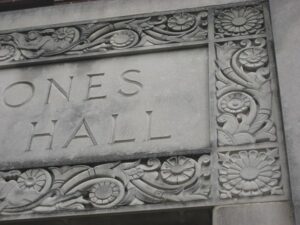Yesterday, I wrote about the perfectly outrageous revelation that buildings at several City College of San Francisco campuses remained without heat for two or more years. Only after faculty members invited Board of Trustees members to conduct their meeting in a heatless classroom did the maintenance money start to flow.
The situation is particularly shocking, given that voters in San Francisco approved a $845M bond issue in 2020 to build new buildings and repair existing ones. Instructors reported conducing classes in temperatures ranging from 42°F-56°F during the winter months. When they complained to the administration, the response was just as shocking. One instructor reported that the administration provided her with a box of hand warmers. Other instructors said the college supplied space heaters that were either underpowered or that overtaxed the electrical system and blew circuit breakers when they were used.
Today, I ran across not one but two articles directed toward facilities personnel on how to advocate for more money to conduct repairs, and identifying when “deferred maintenance” items could be further deferred.
I fail to understand why advocating for maintenance and repair funds is even necessary. Community college campuses have been built with public funds. They are part of the public infrastructure. There should be no need to beg for maintenance dollars because maintenance of the public infrastructure should be a priority.
For far too long, administrators have redirected money away from maintenance in order to fund other priorities. The officials we elect to make certain that does not happen aren’t doing their jobs when it comes to defending the need to keep public infrastructure properly maintained.
Maintenance is a non-negotiable responsibility
One could argue that maintenance is one of many competing priorities on a community college campus. I would argue that maintaining the facilities is a non-negotiable responsibility. Without proper maintenance, the public’s investment is lost. Worse than that, the cost of repairing the damage goes up substantially when organizations don’t perform required maintenance. And who pays? The public, of course.
It’s painfully clear that publicly paid administrators do not willingly do things that the law does not require of them. The Trustees we have elected do not require timely maintenance of public facilities. They also don’t hold the administration accountable when maintenance goes undone.
As a result, the price tag for this volume quantity of neglect now reaches into the billions of dollars. That’s money these institutions expect the public to pay. Another strategy is to wait until neglect remediation is so expensive that building a new facility is the preferred solution.
We cannot accept the position that “there is no money available for facilities repair.” In Washtenaw Community College’s case, the county property tax assessment collects more than $60 million annually for college operations. Maintenance is a legitimate part of the operation of the college. Hoarding money year after year in a so-called “rainy day fund” to fund new construction on campus is not. The public provides enough money to pay for facilities maintenance. It is the spending priorities of the Administration that need work.
Photo Credit: yoppy , via Flickr



















